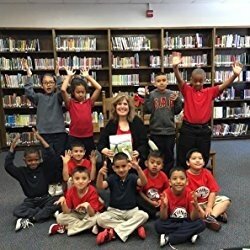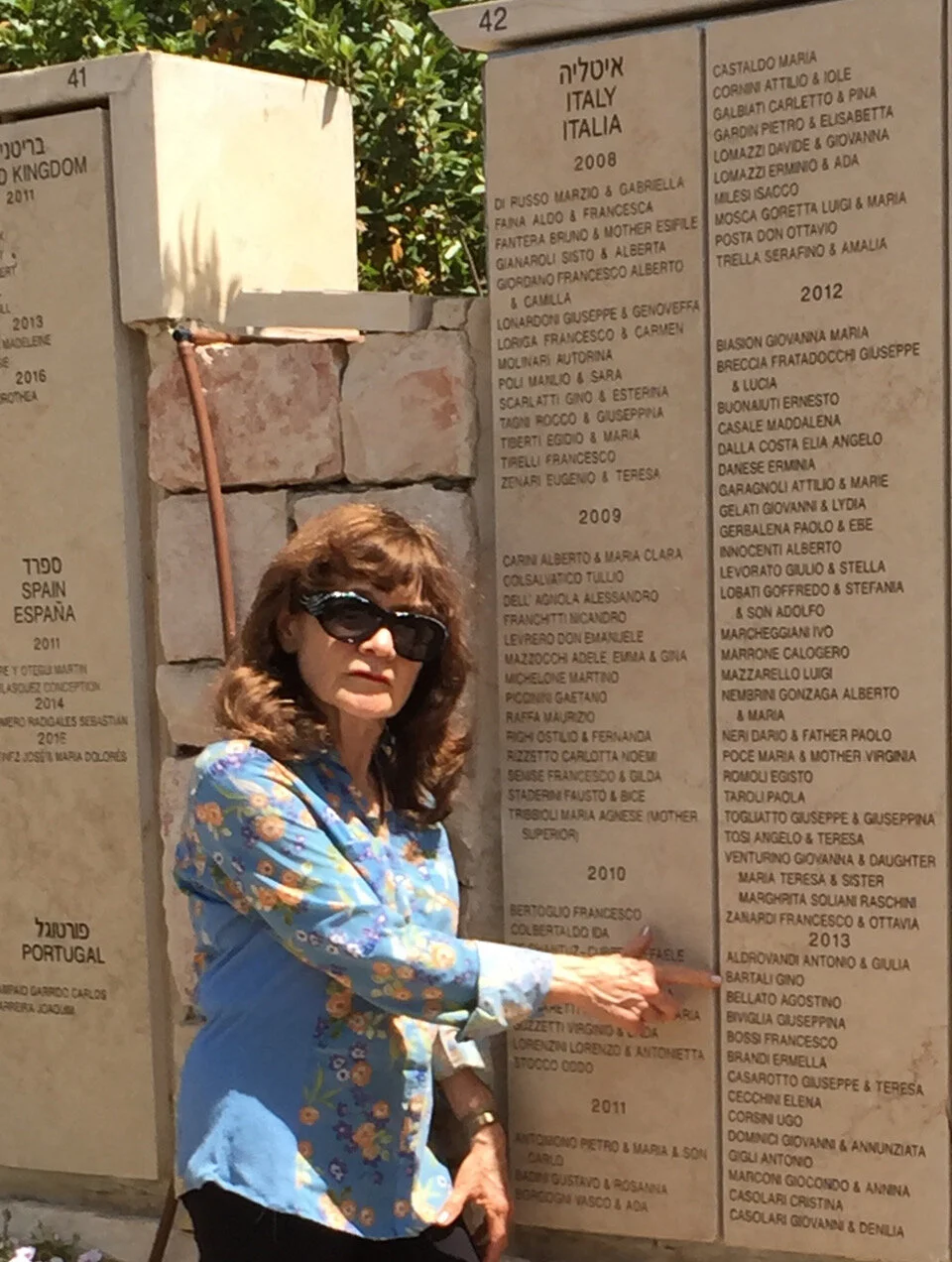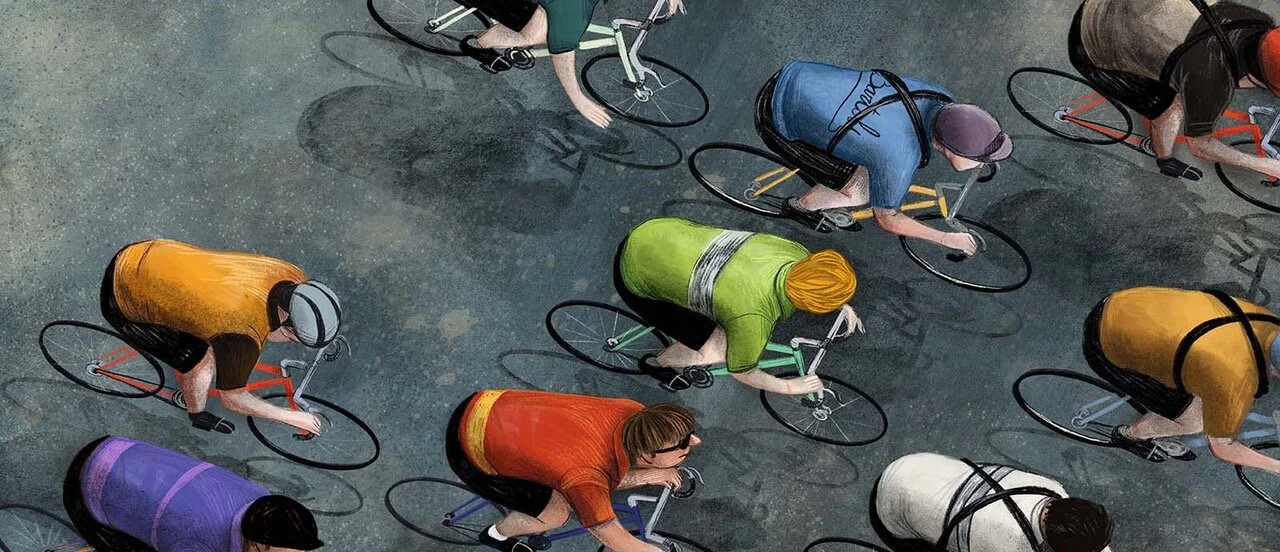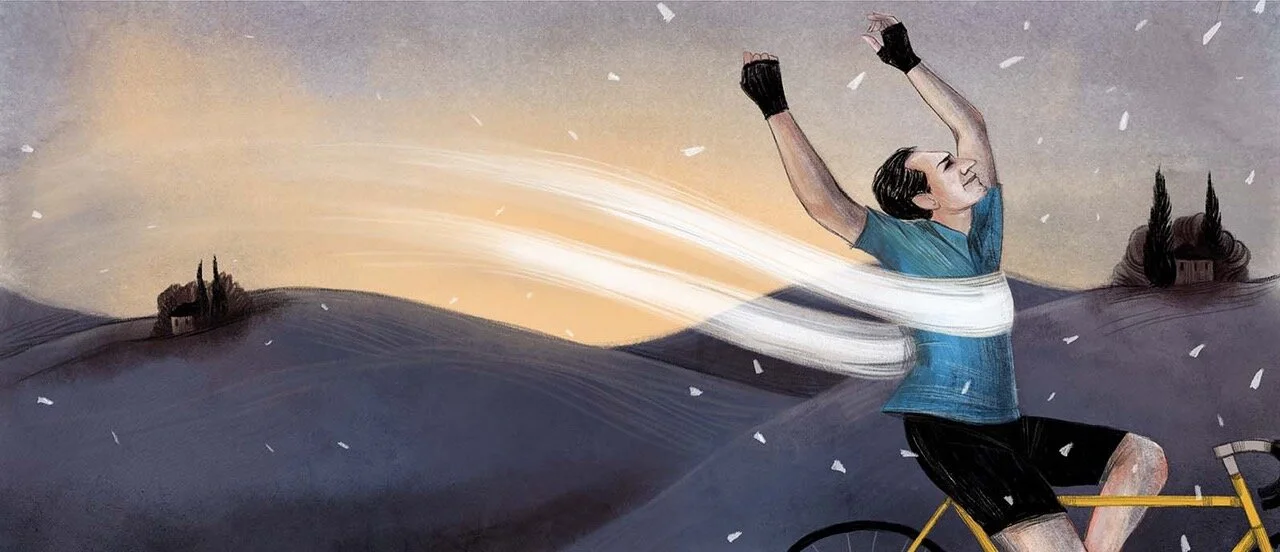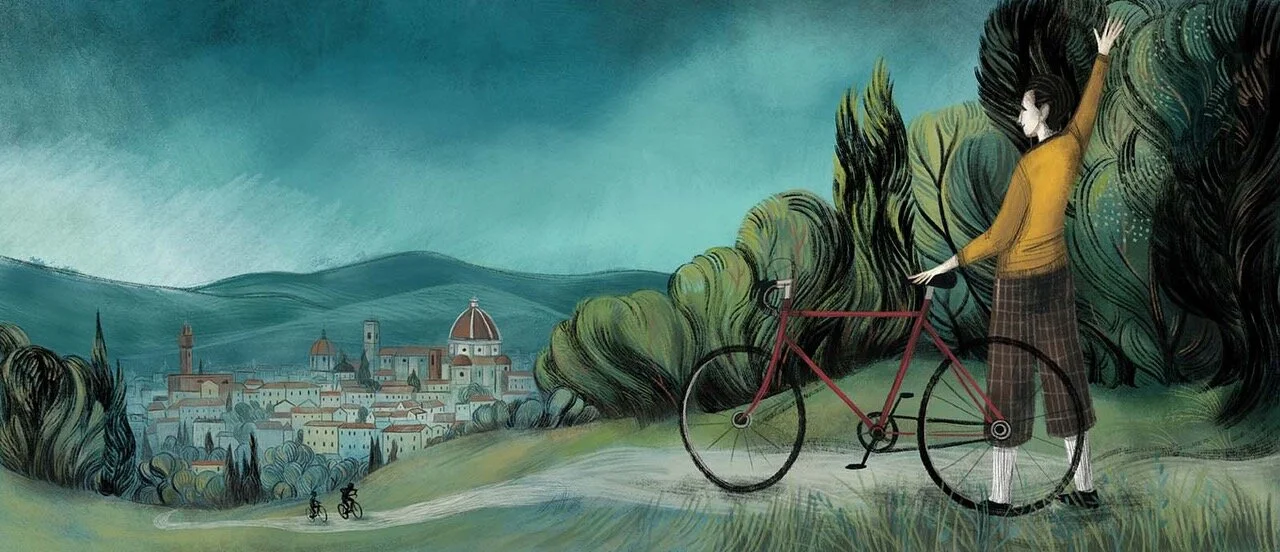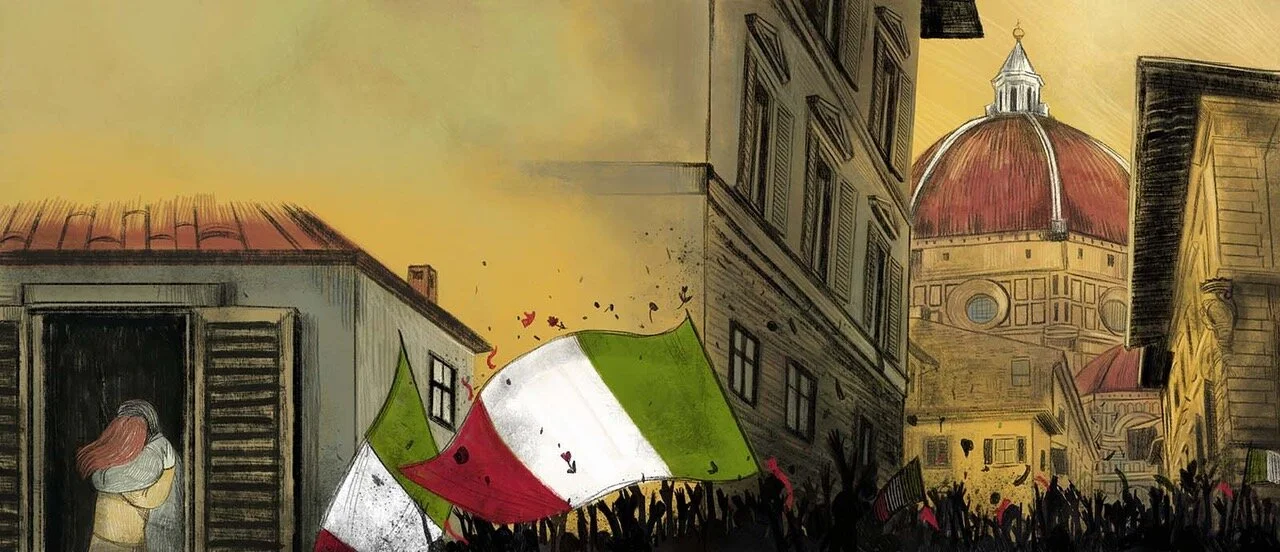Amalia Hoffman is a double threat in the kidlit world: an author and illustrator. On top of that, she’s a kind and generous friend and one of the forces that makes the Book Meshuggenahs, the group we both belong to, thrive. While many know her fanciful and whimsical board books, including the popular PJ Library selection, Dreidel Day (Lerner Publishing), she shows serious nonfiction chops in her new book, The Brave Cyclist: The True Story of a Holocaust Hero (illustrated by Chiara Fedele, Capstone Publishing), which was chosen as a Junior Library Guild Gold Selection and received rapturous reviews from Kirkus, School Library Journal, the Association of Jewish Libraries, and the Jewish Book Council.
Amalia earned a Bachelor of Fine Arts with honors from the Pratt Institute and a masters degree in art and education from New York University, both in New York City. While she now lives in Larchmont, New York, she’s a native of Jerusalem, which is where she discovered the story of Gino Bartali. More on that in her interview in THE KIDS ARE ALL WRITE!
Amalia Hoffman at the Yad Vashem Holocaust Museum in Jerusalem, pointing at the inscribed name of Gino Bartali at the promenade of the Righteous Among the Nations
Welcome, Amalia. How did you hear about Gino Bartali? What inspired you to write about him?
Each time I go to Israel, I visit the Yad Vashem Holocaust Museum in Jerusalem where I spiritually connect with my parents’ families who perished during the Holocaust.
During one of my visits, I walked through the promenade of the Righteous Among the Nations, which honors non-Jewish individuals who saved Jews during the Holocaust. I noticed that a new name was added—Gino Bartali.
At that time I didn’t know anything about him except that he was Italian. So began my journey, which led me to writing The Brave Cyclist: The True Story of a Holocaust Hero. I have always been intrigued by “un-sung” heroes; people who did courageous things but never talked about what they have done and never asked for an award. Gino proved to be such a person. He also proved that one individual could indeed contribute to making the world a better place.
I Googled Gino Bartali’s name and was amazed by what I have found. The more I read about him, the more intrigued I was. I think I fell in love with him… I knew that I wanted to write his story for young readers because I felt that he will inspire them with his heroic acts.
The Brave Cyclist by Amalia Hoffman, illustrated by Chiara Fedele
I was struck by what an unlikely hero he was. You make a point about him being small and weakly, an unlikely candidate to be a champion biker. And then, more subtly, you get the reader thinking about how unlikely it is that a champion biker would risk everything to help people he didn’t know — Jewish people threatened by Mussolini and Hitler. Why do you think he did it?
Gino’s father opposed the Mussolini’s regime and was involved with the Italian Socialist Party. When Gino was 11, his father asked Gino to hide Socialist papers and books for fear that the authorities might discover them.
Gino was also a very spiritual man and a devoted Catholic. His mission to save Jews began when he was contacted by the archbishop of Florence and recruited to join Delasem, an organization committed to saving Jews, which included priests and clergymen.
But I think that the main reason Gino risked his life was because of his personality and commitment to what he felt was just and right. As a weak and sickly child, he had to always struggle to compete against stronger boys. As a champion, he risked his career when he refused to praise Mussolini in his victory speech after he won the Tour de France in 1938. When his Jewish friend, Giacomo Goldenberg faced danger, Gino hid the Goldenberg family in one of his apartments. And so, when he was recruited to smuggle false identification papers for Jewish people that he never met, he followed his devotion and beliefs even though he knew that his life was in danger.
The other fascinating thing about Gino Bartali is that most people didn’t know what he did because he didn’t talk about it. Why do you think he was so private about his heroism?
Gino refused to be interviewed by newspapers and television reporters because he believed that being a famous athlete would overshadow the contributions of the many other people who risked their lives to help those in need. He said, “I don’t want to appear to be a hero. Heroes are those who died, who were injured, who spent months in jail.”
What was your writing journey like? When did you start? How long did it take you to figure out how to tell your story? Did it change and if so how did it change along the way?
I started working on the story in 2015, after one of my visits to the Yad Vashem Holocaust Museum in Jerusalem. I ordered every book I could find and kept reading about bicycles, racing competitions, World War II in Italy and Gino Bartali. A documentary film, My Italian Secret (Jacoby Oren, PBS Distribution, 2015) inspired me to research further. I went on to reading numerous articles. Alas, many were in Italian but luckily, I am fluent in Hebrew and I found a lot of valuable information in Israeli papers and publications. I also contacted the committee of the Righteous Among the Nations at the Yad Vashem Holocaust Museum who selected Gino Bartali for this major honor.
I wrote draft after draft (I think I have over 50 on my computer.) In the beginning, I just wrote everything down that I felt was important to tell. Later, I had to figure out how to condense the story into the word count of a nonfiction picture book. I worked on the story for a couple of months before I felt that I could share it and send it out. After I sold the story to Capstone, I was lucky to be assigned to two incredible editors, Michelle Bisson and Nick Healy who opted for a longer book (40 pages) so as to allow for more illustrations and a longer text. We revised the story, going through several drafts together and making more changes.
You are an illustrator yourself. How did you feel seeing another illustrator’s images appear alongside your words? How do you feel about Chiara Fedele’s illustrations? What is your favorite spread and why?
When I wrote the story, I made a decision not to illustrate it, even though I am an illustrator, because I felt that my style wasn’t right for this particular project. I am absolutely delighted with Capstone’s choice! When I saw Chiara Fedele’s powerful, colorful and sophisticated illustrations, I was smitten by her expressive style. Chiara lives in Italy. She really captured the Italian landscapes and architecture. She also did a fantastic job on the facial expressions so that the reader gets to see the fear, anxiety and struggles in Gino’s face.
The Brave Cyclist by Amalia Hoffman, illustrated by Chiara Fedele
In one illustration, Chiara portrayed Gino, surrounded by reporters after winning the Tour de France. One can see the dilemma in his face, knowing that he would have to stick to his decision not to praise Mussolini and suffer the consequences. While I love all the spreads, my favorites are the ones when Gino, the boy, climbs up the hill and views Florence with its cathedrals, palazzos and the grand synagogue.
Another marvelous spread depicts the jubilant celebration in the streets of Florence after the liberation. Chiara painted a couple hugging one another by a doorway. This detail isn’t mentioned in the book. It was her sensitive touch, adding another layer to the story. Chiara chose to feature the Tour de France race scene from a “bird’s eye” view, as if looking at the competition from above, which allows for an unusual and powerful perspective.
The Brave Cyclist by Amalia Hoffman, illustrated by Chiara Fedele
You write in a wide variety of genres, from fanciful board books, like Astro Pea and Dreidel Day, to this very serious biography of a man who risked death to do the right thing. What draws you to very different subjects and styles of writing?
Maybe that has something to do with my personality. I think that I never totally grew up… Sometimes, I’m really silly, especially when I’m around little kids and I can be very embarrassing. Other times, I’m moody and super serious. I don’t prefer any particular style. I like to experiment and create books in different genres. I like putting myself in different modes, painting baby anthropomorphic animals and, at the same time, researching and writing nonfiction for older kids.
For me, as long as I’m passionate about the project, I prefer not to limit myself and to dip into just about everything. I also spend time working on projects that have no chance at all of turning into any type of a book, like making puppets, doing arts & crafts and writing what I remember from my dreams.
Tell us about some of your other favorite works.
Right now, I am experimenting with collage and mixed media. I am re discovering the joys of working with tissue papers, something we used to do in first grade. I am discovering the possibilities of creating collage and then, working on it in Photoshop. I am also looking at the possibility of creating a picture book series.
Like me, you are a member of the Book Meshuggenahs, a group of Jewish women writing books with Jewish characters and themes. Please share why you became a Book Meshuggenah and what you’d like folks to know about our group.
Our group is totally amazing because we all share the passion of creating Jewish-themed children books, and, as writers, we all feel the need to support each other. We are award winning Jewish children’s book authors, residing in different cities in the US and Israel. I decided to join the group because I realized that it truly “takes a village” to grow as a writer. I love the fact that I am now part of a group where each author goes through her own exciting writing journey but, at the same time, shares her experiences, good and not-so-good, with the group. One of our goals is to help each other spread the word about writing Jewish-themed books. We achieve this goal by establishing our presence on social media and posting flyers where we list our books annually. Each member contributes her expertise, as some of us are very capable of creating flyers while others are better at making contacts.
Can you share what you’re working on next?
I am working on the biographies of two other “un-sung” heroes, this time, amazing women who were never duly recognized for their achievements. At the same time, I just completed a concept board book and am working on another. I am also at the very early stage of developing a picture book.
Thanks, Amalia, for hanging out with us on THE KIDS ARE ALL WRITE! To connect with Amalia, visit her:
On her website: amaliahoffman.com
On Facebook: Amalia Hoffman
On Twitter: @AmaliaHoffman
On Instagram: hoffman.amalia
And of course wherever the Book Meshuggenahs are found:
On Facebook: Book Meshuggenahs
On Twitter: @TMeshuggenahs
On Instagram: @bookmeshugs
And by email: thebookmeshuggenahs@gmail.com
